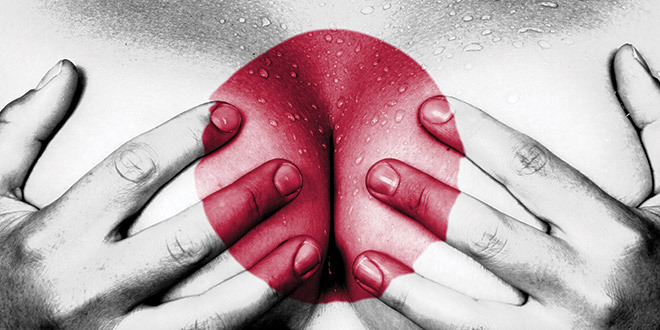For centuries, Japan was deliberately closed off to the rest of the world, which helped create a firmly traditional, male dominant and morally strict society, quite oppressive to women and the lower class. Surprisingly enough, that did not necessarily imply they were sexually repressed, so behind the thin walls of their bedrooms they often led freaky and perverted sex lives to compensate for the strictness of social norms.

1. Samurais kept porn on themselves as a lucky charm
Classic erotic woodprint art called shunga was very sought after in Japan throughout the centuries and all the way into modern period when the arrival of erotic photography slowly suppressed it. It had many uses, some of which would be expected, like the stimulation of libido for marital spouses, or being used as a masturbation aid for those who were not in the position to enjoy sex with an actual partner, the traveling salesmen for instance. However, certain beliefs developed around them, expanding their purpose. Probably the most interesting among them was based on samurai’s conviction that having shunga in their possession on the battlefield will somehow protect them from getting killed there. In all fairness, it is probably wrong to equal shunga erotica with present day porn, as much of it displayed considerable artistic value, especially during its peak in the Edo period
2. Being gay was ok (if you were a guy)
Somewhat surprisingly for a strongly traditional patriarchal society, male homosexuality was widespread in many forms and quite socially acceptable. Not unlike some old western cultures, like ancient Greece or Rome, it was not unusual for married men to have male lovers as long as they were insertive partners during intercourse. The relationships were asymmetrical with tops being much older than bottoms, usually prepubescent boys or young adults. The younger partner would usually receive a monetary incentive for the relationship. The other common and also asymmetrical type of gay relationship was between Buddhist monks, where older monks would take young ones as their lovers. Both types of relationships were often depicted on the already mentioned shunga prints.
3. Sleeping around was also ok (again, if you were a guy)
Men were legally allowed to have lovers and, in a way, expected to do so. The reason for that was the fact that sexual satisfaction of either partner was not considered a marital duty. The purpose of marriage was procreation and that was the only requirement from marital sex. For all the other sexual needs, there were various levels of sex workers, concubines, or, as mentioned, young boys. This attitude fuelled the flourishing business of prostitution in which one end of the spectrum was reserved for high-class courtesans and geishas, the latter being primarily performers. On the other end of the spectrum, there were low-class prostitutes who were making barely enough to survive. Sexual needs of married women were not really considered, and full marital fidelity was expected, at least on paper. In reality, female extramarital activities were often tolerated for women of higher class as long as they were reasonably discreet about it and if they did not result in pregnancy. One thing was however unacceptable for either gender; one was not expected to develop romantic feelings for a lover – or as it was explained by one author in the 1930s: “According to the traditional moral ideas, it is deemed a sign of mental and moral weakness to fall in love”.
4. Geisha’s virginity was auctioned, sometimes more than once
The defloration ceremony called mizuage was the most important moment in the coming of age of young geisha. The act was financially sponsored by a patron who in return got to personally take the virginity of a young geisha. The practice, described in the best-selling book Memoirs of a Geisha, also adapted into a movie, was widespread and very popular for centuries until it was finally banned in 1959 along with other forms of prostitution. Apart from its significance as a young woman’s rite of passage, mizuage was also a lucrative, and often shady business. An actual geisha, unlucky enough to come of age in the 50s just before the practice was banned, described in her autobiography that she was forced to repeatedly undergo the horrors of mizuage with various patrons, all convinced she was an actual virgin.
5. They were crazy about sex toys
Shunga prints also reveal the prolific use of various sex toys that flourished underneath the moralist surface. Among them, all sorts of dildos were used, the most common of which belonging to a broad class of harigatas: hollow, penis shaped devices made of animal horn, shell, leather, wood, or even papier-mache, designed to be inserted into the vagina or anus. Strap-ons and double dildos were also often depicted in heterosexual, homosexual or group sex variants. Other toys that were quite frequently used were little insertable balls, put in the vagina to provide additional stimulation during intercourse, and various cock-rings and armoured sleeves that were put around the penis, strengthening the erection and increasing stimulation of the receptive partner.
For related topics, check out:
